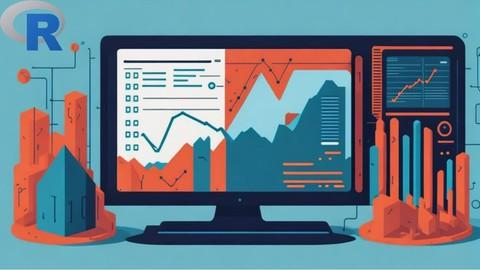Last Updated on October 20, 2023 by GeeksGod
Course : Macroeconomic Analysis: Investigating Inflation Trend with R
Welcome to Macroeconomic Analysis: Investigating Inflation Trend with R
Welcome to the Macroeconomic Analysis: Investigating Inflation Trend with R course. This is a comprehensive data analysis course where you will be guided step by step on how to perform complex data analysis and visualisation on inflation data using R programming language. This course is a perfect combination of macroeconomics and statistics as you will learn all things about inflation from both perspectives.
In the introduction session, you will learn basic fundamentals of R programming language, such as getting to know its use cases and features that R has but Python does not have.
What is Inflation?
Inflation is a major economic concept that every individual should understand. It refers to the overall increase in prices of goods and services in an economy over a specific period of time. The root cause of inflation lies in the imbalance between the supply and demand of money. When there is an excess supply of money in the economy, it leads to an increase in prices.
Factors that Cause Inflation
There are several factors that can potentially cause inflation. One of the most common factors is the oversupply of cash. When there is more cash in circulation than the actual demand for goods and services, it leads to an increase in prices.
Other factors that can cause inflation include:
- Increased production costs
- Rise in wages
- Government policies
- Changes in exchange rates
Understanding the factors that cause inflation is crucial for economists and policymakers in order to develop effective strategies to manage inflation.
Importance of Analyzing Inflation Data Using R
Now that we understand the concept of inflation, let’s address the question of why we should analyze inflation data using the R programming language.
R is a powerful tool for data analysis and visualization. It has a wide range of libraries and packages that make it easier to manipulate and analyze large datasets. By using R, we can gain valuable insights into inflation trends and make data-driven decisions.
In this course, we will learn how to calculate inflation rates, analyze the relationship between inflation and interest rates, and forecast future inflation based on historical data. By leveraging the capabilities of R, we can perform complex analyses and visualize the results in a meaningful way.
Course Objectives
In this course, you can expect to learn the following:
- Basic fundamentals of macroeconomics and inflation
- Factors that cause inflation and real-life examples of inflation
- Basic fundamentals of R programming language and its use cases
- Calculating inflation and interest rates
- The impact of high interest rates on the market
- How to find and download datasets from Kaggle
- Cleaning and preprocessing data using R
- Visualizing inflation data using scatter plots
- Investigating inflation trends during the 2008 economic crisis
- Comparing inflation rates between countries
- Forecasting future inflation using R
- Analyzing the correlation between inflation and interest rates
- Analyzing the correlation between inflation and unemployment rates
- Policy solutions to lower inflation rates
Setting Up the Tools
Before we dive into the course content, it’s important to set up the necessary tools. In order to follow along with the exercises and projects, you will need to install R programming language and R Studio, which is the IDE that we will be using.
In addition, we will be using datasets from Kaggle for our analysis. Kaggle is one of the largest data science learning platforms that offers a wide range of datasets for free. You will learn how to find, download, and import datasets into RStudio Cloud.
By the end of the course, you will be equipped with the knowledge and skills to analyze and visualize inflation data using R. You will also be able to deliver data insights and summaries highlighting your findings during the course.
Are you ready to dive into the world of macroeconomic analysis and become proficient in using R to investigate inflation trends? Enroll in the Macroeconomic Analysis: Investigating Inflation Trend with R course today!
Keywords: Free Udemy Coupon, Macroeconomic Analysis, inflation, R programming language, data analysis, visualization, factors that cause inflation, analyzing inflation data, R programming language, calculate inflation rates, interest rates, Kaggle datasets, forecasting inflation, correlation analysis, policy solutions, R Studio














